by Alexander Vershbow, Daniel Fried
Getting along with Russia, as then-candidate Donald J. Trump suggested, would indeed be a good thing. But, Bill Clinton, George W. Bush, and Barack Obama tried and failed; US-Russian relations are not much better under Trump, and Russia is not on especially good terms with Europe either.
Dealing with Russia “as it is,” as some capable Russia experts (including the authors’ former colleagues) recommend in their “open letter” urging that the United States rethink its Russia policy, sounds unarguably realistic.2
But, Russia “as it is” is a stagnating authoritarian kleptocracy led by a president-for-life who has started wars against its neighbors, assassinates opponents inside and outside of Russia, interferes in US and European elections, and generally seems to act as an anti-US spoiler at every opportunity. Its leadership expects the West to grant Russia a free hand in “its” half of Europe, and to look the other way when it seeks to deprive its former neighbors—and its own citizens—of the right to chart their own futures.
That’s not a great basis for better relations, or for arguing that the United States or the West must take principal responsibility in reaching out to or accommodating Vladimir Putin’s Russia.
The authors prefer, however, to think in more hopeful terms about the longer-term potential of Russia’s relations with the world, the West, and the United States. They are realistic about the obstacles, especially in the short run, but do not think that Russia’s relations with the West are permanently stuck in the bad place they are in now, or that “as it is” is Russia’s only possible end state.
Current US-Russian relations are about as bad as they were during the final years of Leonid Brezhnev’s Soviet Union and the first term of the Ronald Reagan administration, a time when many in the United States and Europe believed that the danger of further deterioration—or even war—was real.
But, things turned out otherwise—and better. Mikhail Gorbachev followed Brezhnev. His “new thinking” on foreign policy, and Reagan’s constructive response to it, generated a turnabout in US-Soviet relations, and helped create conditions for breakthroughs that ended the Cold War peacefully.
Both authors worked on relations with Moscow starting in that more hopeful period, and during the better times that followed during the 1990s. It is instructive to examine what went wrong (and right) and why, including what the United States did wrong, and what the Russians and the West can do to make it better.
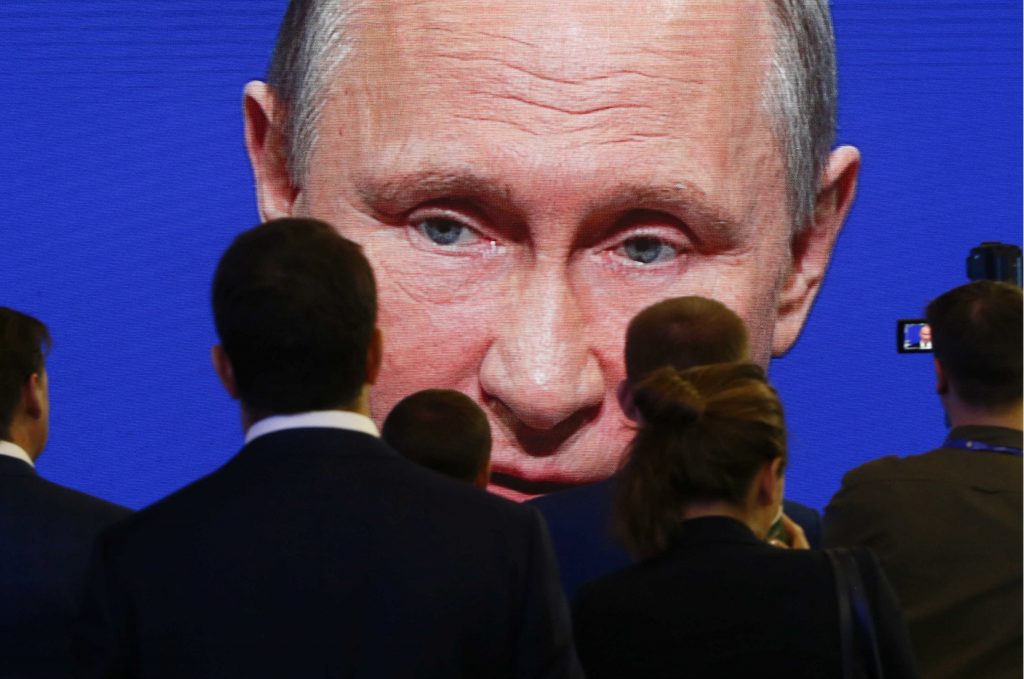
We must deal with Russia as it is, not as we wish it would be”
August 5, 2020, open letter urging the United States to rethink its Russia policy.3
Participants at the St. Petersburg International Economic Forum gathered near an electronic screen showing Russian President Vladimir Putin who addressed a session of the forum in St. Petersburg, Russia, on June 2, 2017. REUTERS/Sergei Karpukhin
Sources of Russian foreign policy
In her book Putin’s World: Russia Against the West and with the Rest, Angela Stent posits seven pillars of Russian foreign policy under Putin.
“Russia has a right to a seat at the table on all major international decisions.”
“Russia’s interests are as legitimate as those of the West,” (and Russia will not align itself with a Euro-Atlantic consensus it cannot lead)
“Russia has a right to a sphere of privileged interests in the post- Soviet space.”
“Great powers like Russia, China, India, and the United States enjoy absolute sovereignty…Smaller countries, like Ukraine and Georgia, are not fully sovereign…”
“Russia will continue to present itself as a supporter of the status quo…an international power that respects established leaders.” (no Western-promoted regime change, but Russia can promote regime change in its own sphere)
“Russia believes its interests are best served by a fractured Western alliance”
“Russia will push to jettison the post-Cold War, liberal, rules-based international order…in favor of a post-West order…with China, Russia, and the United States dividing the world into spheres of influence.”4
This is a fairly comprehensive description of Russia’s foreign policy framework, applicable to Putin’s Russia in its current phase.5
The two large, underlying factors driving current Russian strategic thinking are
Trauma over the breakup of the Soviet Union and its consequences for Russia, combined with a narrative of grievance over how the United States and the West responded
A dilemma that Ambassador George Kennan pointed out long ago in his “Long Telegram”: Russia’s persistent political and economic weakness at home makes it insecure in the face of more advanced neighbors, especially to the West (and now with respect to China as well)—prompting it to external aggression to keep that perceived enemy away and protect its system by limiting the penetration of Western ideas and values that could provoke challenges to the regime
As a corollary to that latter dilemma, Russia—lacking the ability to attract allies by virtue of its leadership of an open and prospering system, as the United States did (at least before Trump)—seeks to dominate its neighbors, by force if necessary, and to undermine their efforts to forge closer ties with Western countries and organizations. Indeed, under Putin, Russia seeks to discredit Western democracy itself, in order to prevent it from taking root along Russia’s borders and to reduce its appeal to the Russian people.
These factors may help explain some of what went wrong before, and may help inform thinking about what is possible while seeking the best way ahead.
The apex of relations: Hope meets history
Many in the United States and Europe—including the authors—regarded the fall of the USSR as Russia’s self-liberation from communism. They celebrated when Gorbachev embraced democracy, glasnost (openness), and individual liberty as universal values, and when he let the Warsaw Pact dissolve itself without a fight. They regarded Boris Yeltsin on the tank in August 1991, facing down an attempted communist coup against Gorbachev, as symbolizing a Russian democratic breakthrough in common with those that had just taken place in Poland and throughout the USSR’s European empire.
The authors hoped that Russia could then move in the direction that Poland and others in Central Europe were pioneering: the replacement of discredited communism with democratic politics, pluralism, independent media, and liberal free-market reforms. Nobody expected that the Russian path ahead would be identical to that followed in other post-communist countries, but the authors hoped that the direction would be roughly parallel.
It became US policy—beginning under President George H. W. Bush, and more comprehensively under President Clinton’s (and Deputy Secretary of State Strobe Talbott’s) leadership—to do what the United States could to help the internal transformation and cement a long-term partnership between Russia and the West within a unified Euro-Atlantic community.
The United States did not invent these hopes or impose its ideas on Russia. By the late 1980s, the two countries were really speaking the same language. In his June 1992 speech to a joint session of Congress, Boris Yeltsin, still near the top of his game, spoke of Russians ending “seventy-five years of [communist] nightmare,” thanked the American people “for their invaluable moral support,” and committed to free-market democratic reforms, promising that Russia would never again lie in foreign affairs, and associating Russia with the United States in strong terms: “Today the freedom of America is being upheld in Russia.”6
US policymakers in both the Bush and Clinton administrations expected a difficult transition period, but hoped for a “J curve”: sharp decline as the communist economy shrank, followed by stabilization and growth as a new economy developed and new state structures appropriate to a modern state emerged.
These expectations were optimistic, but not fanciful. The Poles, Balts, and others were succeeding with that model and, notwithstanding today’s challenges in Central Europe, achieved a generation of growing prosperity (including tripled gross domestic product (GDP)), strong democratic institutions, and progress toward the rule of law.
US policymakers were equally expansive and optimistic in their offers to bring post-Soviet Russia into an undivided Europe, an external transformation paralleling the internal one. Even before the Soviet collapse, as now-declassified records of Reagan-Gorbachev and Bush-Gorbachev summits make clear, Washington and Moscow were speaking about shared values within “a common European home.”
These ambitions were made explicit and agreed to, even by Gorbachev’s USSR, through the November 1990 “Charter of Paris for a New Europe” that sought to end the Cold War without either a re-division of Europe (unlike the Yalta Summit of 1945) or a punitive settlement (unlike the Versailles Treaty of 1919 that ended World War I but embittered Germany).
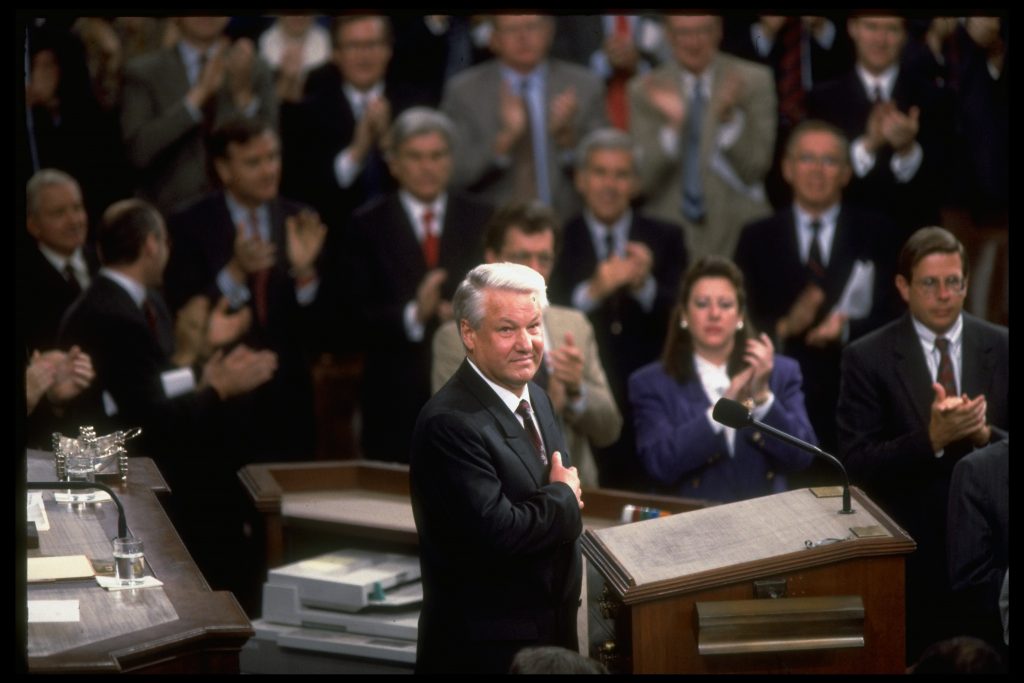
Citizens of Russia upheld their freedom and did not allow the continuation of the 75 years of [communist] nightmare… Today the freedom of America is being upheld in Russia.”
President Boris Yeltsin, June 17, 1992.
Former Russian Pres. Boris Yeltsin addressing joint session of Congress in summit appearance on Capitol Hill. (Photo by Terry Ashe/Getty Images)
The Charter of Paris welcomed the Soviet Union to a Europe “whole and free” on the basis of agreed principles, among them: respect for human rights, democracy, and the rule of law; economic liberty and social justice; non-use of force; and respect for all states’ sovereignty and political independence, including “the freedom of states to choose their own security arrangements.”7
The United States sought to make that vision a reality, including a European security system that included a democratic Russia. To get there, the Bush (and later Clinton) administrations wanted to build on the new Organization for Security and Co-operation in Europe (OSCE) and a reformed, more political NATO Alliance that was open to new members, but, in parallel, sought a strategic partnership with Russia.
The day after the failed August 1991 coup, Alexander Vershbow, newly arrived as the deputy at the US Mission to NATO, argued that NATO should become the core of security in an undivided Europe, with a democratic Russia as an essential part.
Though this is seldom recalled, the United States and its allies achieved a lot by engaging Russia in those early years.
In December 1991, NATO created the North Atlantic Cooperation Council (NACC) to bring together former Cold War adversaries. Soviet Ambassador Nikolay Afanasievsky announced at the end of the first NACC ministerial meeting that he could not sign the communique in question because the USSR had just “ceased to exist.” A few minutes later, NATO Secretary General Manfred Woerner read out a telegram from Boris Yeltsin declaring that newly independent Russia was interested in joining NATO.8
Russia-NATO cooperation advanced in the years that followed. Russia joined NATO’s Partnership for Peace, established at US initiative in 1994 to promote military cooperation and interoperability. Russian forces deployed alongside NATO troops in Bosnia and Herzegovina in 1995 to implement the Dayton Peace Accords that ended the civil war there. And, in 1997, NATO and Russian leaders signed the NATO-Russian Founding Act, formalizing a Russia-NATO strategic partnership and creating a Permanent Joint Council for consultation and joint action.
Responding to Russian concerns, the Founding Act even included unilateral commitments by NATO to demonstrate that an enlarged Alliance would pose no military threat to Russia: a pledge ruling out the deployment of nuclear weapons on the territory of new members; and a commitment, “in the current and foreseeable security environment,” to refrain from the “additional permanent stationing of substantial combat forces.” These commitments are still being upheld by NATO in the design of its enhanced Forward Presence (eFP) in the Baltic States and Poland in response to Russia’s aggression against Ukraine.9
With the possibility of US-Russian conflict receding, the United States drew down its forces in Europe from more than one hundred thousand in 1997 (with twenty brigades) to just two brigades in 2012. Russia acted in like fashion, shifting most of its forces away from Europe up until 2014, even after NATO opened its doors to three new members in 1999 and seven more in 2004.
US assumptions, Russia’s dilemma
The hopes of the United States were, in the end, not realized, partly because both the Bush and Clinton administrations were mistaken in some basic assumptions about post-Soviet Russia.
Washington did not fully appreciate the profound difference between post-communist transformation in Central Europe and simultaneous post-communist and post-Soviet transformation in Russia. For Central Europe and the Baltics, the end of communism and Soviet domination meant national liberation and escape from a socioeconomic system imposed from outside. But, for Russia, the end of the Soviet Union was more imperial collapse. While it kept Siberia and the Far East, Russia otherwise found itself reduced to something like its mid-seventeenth-century borders.
That produced a political shockwave. It meant, in particular, that the political capital of national liberation that was available to the early post-communist leaders in Central Europe and the Baltics did not exist in the same way for Yeltsin and his team.
The Central Europeans, Poles, and Balts, in particular, could—and did—use the political capital of liberation to carry their countries through the most difficult periods of economic transformation to a free-market system. It proved sufficient, albeit just barely, to keep publics on board despite the inevitable hardships.
Yeltsin and his team of both economic reformers and those seeking to lead Russia to a more productive place in an undivided Europe, by contrast, did not have that degree of political capital at their disposal.
Looking back, pro-Kremlin Russians (and some in the West) sometimes argue that the United States sabotaged the Russian economy by imposing neo-liberal formulas foreign to the Russian tradition, and did so deliberately to weaken Russia. That is nonsense: the same advisors provided much the same advice to the Russians, the Poles, and the Balts, but the results were vastly different.
But, the Russians were operating under less favorable political conditions and Yeltsin himself, who might have provided the political cover for sustaining reforms, suffered declining health by the mid-1990s. This made him ill-equipped to prevent the rampant corruption and looting that put the economic wealth of the country in the hands of a new class of “oligarchs,” and fueled public disillusionment with capitalism and democracy.
Pro-Kremlin Russians (and some in the West) also argue that by leading NATO’s enlargement to Central European countries, the United States sabotaged Russia’s attempts to join with an undivided Europe.
That is also not true. The United States, with the full support of its European allies, insisted from the start that NATO enlargement should move in parallel with building a NATO-Russia relationship, an “alliance with the Alliance,” with ultimate Russian membership in NATO—as Yeltsin had suggested—never ruled out.10 NATO enlargement was intended to provide the security underpinnings for a Europe whole and free; no enlargement, no matter how it was rhetorically dressed up, would have meant extending the line of the Iron Curtain, of “Yalta Europe,” into the future.
Russian authorities make much of threats they have historically faced from the West, often citing Napoleon Bonaparte’s and Adolf Hitler’s invasions (such Kremlin rhetoric even goes back to Russia’s wars with the Polish-Lithuanian Commonwealth in the sixteenth and seventeenth centuries; Russia’s current national day celebrates the expulsion of the Poles from Moscow in 1612). But, NATO’s existence eliminated the chances of such threats arising again, and its enlargement extended that stability to Central Europe. Thanks to NATO and NATO enlargement, Russia enjoys the greatest degree of security to its west in its history. As noted, this was reflected in the steady drawing down of conventional forces in western Russia up until Russia’s aggression against Ukraine in 2014, when twelve Central and East European nations joined NATO.11
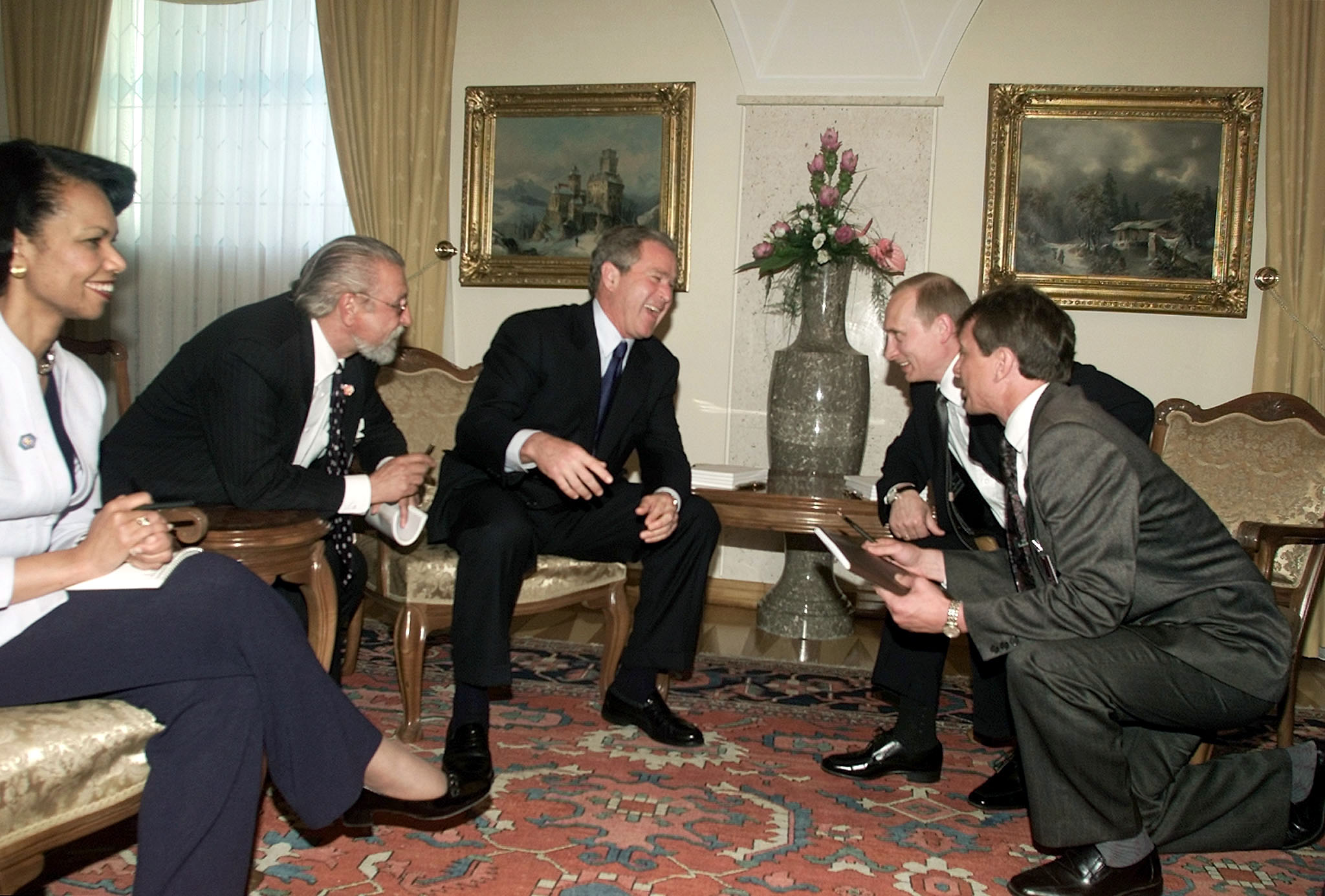
US National Security Adviser Condoleezza Rice (L) looks on as President George W. Bush shares a laugh with Russian President Vladimir Putin at Brdo Castle in Ljubljana, June 16, 2001. The two leaders discussed regional security issues privately. REUTERS/LSD/ME
The first “reset”
The most ambitious hopes for a new Russian relationship with the United States and Europe had faded by the end of Yeltsin’s presidency in 2000, but when he entered office in January 2001, President George W. Bush tried with Yeltsin’s successor what his administration considered a more realistic policy toward Russia.12
Bush’s Russia team, led by National Security Advisor Condoleezza Rice, believed that Russia’s new President Vladimir Putin might be a leader in Russia’s tradition of authoritarian modernizers, who could restore state structures and the rule of law after the chaotic 1990s, ending state capture by the oligarchs, while still being willing to work with the United States and the West.
A Russian leadership that could restore stability and prosperity at home, so the administration’s Russia team believed, would be more confident and steady, and, therefore, more capable of sustaining and advancing constructive relations with its neighbors, Europe, NATO, and the United States.
Bush reached out to Putin and had a good initial meeting in Slovenia in June 2001, at the end of Bush’s first trip to Europe (which also included a stop in Poland). Bush’s remark that he had gained a glimpse into Putin’s soul has been criticized, but reflected Bush’s determination to build a good personal relationship with Russia’s leader.
The early years of Bush-Putin relations made progress, including: counterterrorism cooperation after the September 11, 2001, attacks on the United States, especially Putin’s agreement not to object to temporary US bases established in Central Asia in support of the initial Afghanistan operation; and an upgrading of NATO-Russia relations through establishment of the NATO-Russia Council at a NATO-Russia summit outside Rome in May 2002, in advance of NATO’s membership invitation in November 2002 to seven Central European states, including the Baltic states. Putin’s November 2001 visit to Bush’s ranch in Crawford, Texas, was filled with hope on both sides for sustainable cooperation. “We’re just getting to know Putin, too,” one senior Russian official said to Daniel Fried at the Crawford dinner. “Putin, Bush: this might work out well for us all.”
Relations deteriorated after 2002, though not because of NATO enlargement.
One factor was the US decision to launch the Iraq War. Moscow had not liked the 1999 NATO air campaign against Serbia over its atrocities in Kosovo, especially as it had been launched without an explicit UN Security Council (UNSC) mandate. However, it then accepted the US argument that it was a one-time exception to avert a humanitarian catastrophe. Iraq was a bigger operation against a traditional Russian ally, again taken without UNSC authorization, thus marginalizing Russia’s veto power. The Bush administration, while angered by French and German opposition to the Iraq War, took Putin’s opposition in stride.
A second factor was the Bush administration’s aggressive pursuit of ballistic-missile defense of the US homeland. Putin had calmly accepted US withdrawal from the Anti-Ballistic Missile (ABM) Treaty in 2002, but US plans in Bush’s second term to establish ballistic missile sites in Poland and the Czech Republic convinced him that the United States was seeking to weaken Russia’s strategic deterrent. The sites were intended to counter Iranian threats to the US mainland, and did not have the capacity Putin feared, but the Russian security establishment believed otherwise.
A third and larger factor in Putin’s growing hostility to the United States was the outbreak of the Rose and Orange Revolutions in Georgia (2003) and Ukraine (2004). These were, in fact, homegrown rebellions against corrupt and ineffective leaders and, in the case of Ukraine, against Russian-backed efforts to steal an election on behalf of Moscow’s preferred candidate. But, Putin saw these as US-planned operations seeking to undermine Russia’s interests in its post-Soviet sphere of influence. Georgia’s and Ukraine’s subsequent pursuit of NATO membership and closer relations with the European Union confirmed Putin’s view that the United States was seeking to undermine core Russians interests and the basis, as he saw it, for good relations with Washington.
Putin also regarded US criticism of his deepening autocracy and repression—including suppression of independent media (especially television), the killing of independent journalist Anna Politkovskaya, and the arrest of oligarch-turned-political-opponent Mikhail Khodorkovsky—as signs of hostile intent to weaken Russia by supporting anti-regime forces.
In a blistering speech at the Munich Security Conference in 2007, Putin made clear that he regarded the West as an adversary.13 In August 2008, emboldened by NATO’s open divisions at the April 2008 Bucharest summit over whether to offer Georgia and Ukraine a “Membership Action Plan,” for which the United States had failed to achieve a NATO consensus, Putin provoked a war with Georgia.
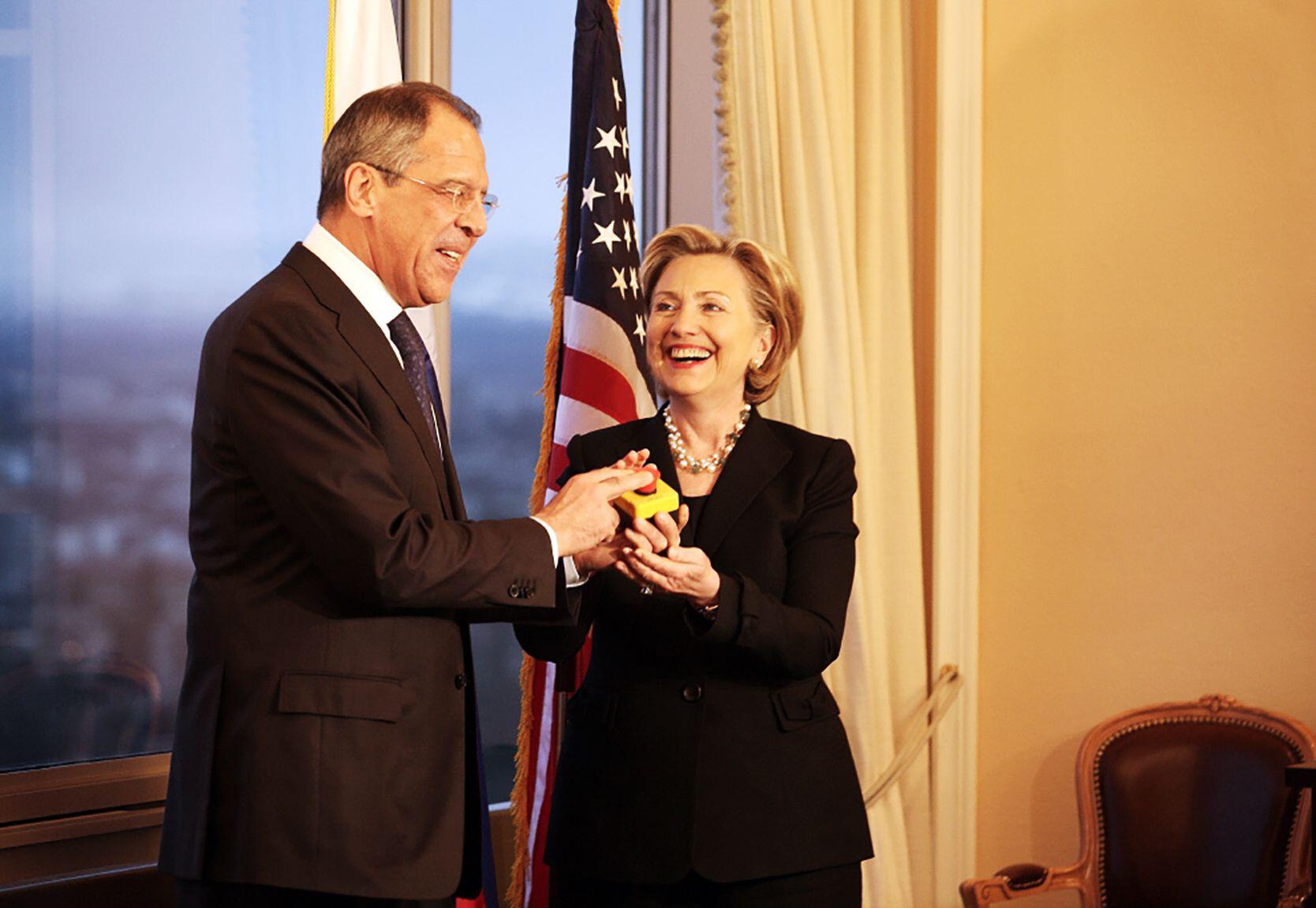
“Reset Button” offered by US Secretary of State Hillary Rodham Clinton to Russian Foreign Minister Sergey Lavrov in Geneva, Switzerland March 6, 2009. On the button, “Reset” was misspelled in Russian. The Color Archives/Alamy
The second reset
Putin’s arc of relations with President Obama took a similar shape. Obama came to office seeking a “reset” in relations with Russia after a brief suspension of cooperation following the Georgia war. Obama paid an early visit to Moscow for meetings with the new official leader, President Dmitry Medvedev, and the power behind the throne, Prime Minister Vladimir Putin. Obama and Medvedev agreed to accelerated negotiations on a New Strategic Arms Reduction Treaty (New START), and to expand bilateral cooperation across the board through a new Bilateral Presidential Commission.
In September 2009, Obama announced significant changes to planned US missile-defense deployments in Europe.14 He changed the system intended for Poland to one with less capacity to threaten Russia’s strategic deterrent (the SM-3), added a second SM-3 site in Romania even farther from Russia, and dropped the missile-defense radar in the Czech Republic entirely. (The Obama administration was clumsy in the way it rolled out that decision. In so doing, it alienated the Czechs and Poles, who had backed the original deployment, and created the false impression that Obama was willing to burn US friends to reach out to Putin.)
Nevertheless, Obama’s reset, like Bush’s earlier outreach to Putin, had its achievements. These included President Medvedev’s agreement in July 2009 for US forces to use Russian airspace on their way to Afghanistan, the New START treaty signed in April 2010, and the launch of US-Russia and NATO-Russia talks on missile-defense cooperation following Medvedev’s attendance at the 2010 NATO Summit in Lisbon. In 2011, Russia abstained on a UN Security Council Resolution on Libya that opened the way for NATO military action to prevent violence against opposition forces rebelling against Muammar al-Qaddafi in the wake of the Arab Spring. The latter decision may have been Medvedev’s own call, to which Putin initially acquiesced, but Putin ultimately objected when it led to the overthrow and assassination of Qaddafi, which he saw as the product of US-sponsored regime change.
As with Bush’s outreach, the reset stumbled in the face of Putin’s anger over what he may have thought was yet another attempt at regime change in Russia itself: US criticism of the Kremlin’s suppression of popular protests following flawed parliamentary elections in 2011, and of Putin’s return to the presidency in 2012.
Obama’s reset died after another Russian attack on a neighbor.15 This time it was Ukraine, which Putin attacked using special and regular forces after sustained demonstrations, another “color revolution,” forced out the pro-Russian Ukrainian President Viktor Yanukovych in February 2014.
Obama, like Bush, was unwilling to accept Russia aggression against a neighbor. The Obama administration, in fact, responded even more strongly to Putin’s attack on Ukraine than Bush did after the Russo-Georgia War: with individual and broader economic sanctions, negotiated with Europe and other Group of Seven (G7) members; and by reversing years of US military drawdown and leading NATO to rebuild its deterrence posture along its eastern flank, including the stationing of multinational battalions in the Baltic States and Poland, and the deployment of a US combat brigade into Poland on a rotating basis.
Relations hit new lows, from which they have not recovered. The Kremlin has stonewalled on diplomatic efforts to end its invasion of Ukraine, but seems content to maintain the conflict as leverage. Reflecting a general hostile approach to the United States and much of Europe, Kremlin actions since 2014 have included provocative military behavior directed against US forces and NATO allies; a military buildup of Russian forces along its western border; violation of the Intermediate-Range Nuclear Forces (INF) Treaty (by deploying a treaty-proscribed intermediate-range cruise-missile system) and the Open Skies Treaty (though whether the Trump administration was wise to withdraw from the treaties is another question); launching of intensified disinformation campaigns against the United States and major Western European countries (while continuing earlier campaigns against Central and Eastern European countries); cyberattacks against the United States, United Kingdom (UK), Germany and others; and continued assassinations and attempted assassinations in the UK, Germany, and Russia itself.16
Notwithstanding the record, President Trump’s personal approach to Putin has been solicitous and sometimes fawning, on display particularly at the 2018 Helsinki summit, when Trump publicly accepted Putin’s denials of interference in the 2016 elections over the conclusions of his own intelligence community.17 (Trump’s motives, and his own relations with Russia and Putin, are happily not the subject of this paper).
The Trump administration, however, has continued the basic elements of Obama’s post-2014 Russia policy: limited diplomatic relations, though some efforts at arms control and strategic stability talks; continued, though unevenly administered, sanctions; and further strengthening of NATO’s European deterrence posture, including an increased US military presence in Poland.
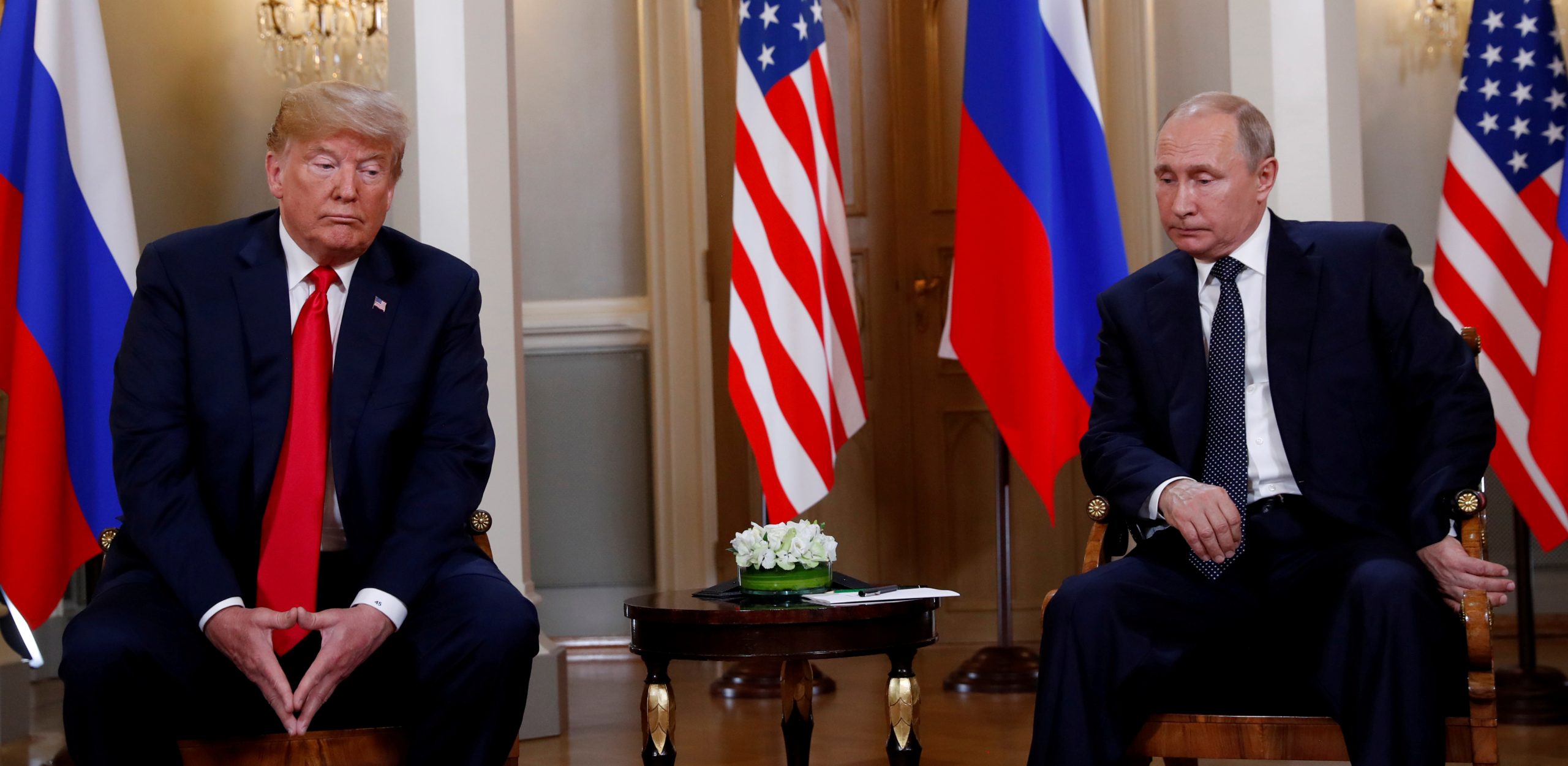
US President Donald Trump meets with Russian President Vladimir Putin in Helsinki, Finland, July 16, 2018. Reuters photographer Kevin Lamarque: “Body language can give an ordinary photo much more meaning, and here, Trump and Putin did not disappoint.” REUTERS/Kevin Lamarque
What went wrong: Russia’s dilemma
The high hopes of the early 1990s, and the more restrained but positive expectations of the Bush and Obama years, were not fulfilled. The United States made its share of misjudgments, but did not spurn or exploit Russia at its post-Soviet moment of weakness.
These hopes ultimately failed because Putin’s terms for good relations with Washington included an expectation that the United States would turn a blind eye to Putin’s deepening authoritarianism at home, and would cede the independent states that emerged from the Soviet Union to Kremlin domination.
The United States did not foment the color revolutions in Georgia, Ukraine, or, more recently, in Belarus. The Bush and Obama administrations were content to live with the leaders who were in power. The Trump administration even tried to improve relations with Belarus’ strongman Aleksandr Lukashenka. Nor was the United States obsessed with bringing Russia’s neighbors into NATO. The Obama administration was, if anything, relieved when newly elected President Yanukovych withdrew Ukraine’s NATO membership application in 2010 in favor of “non-bloc status.”
But, when popular uprisings occurred in these countries against incompetent or oppressive local rulers, Washington was unwilling to look away or accept Kremlin military aggression in response. This was anathema to Putin.
These demands by Putin reflected a deeper dilemma that drives Russian foreign policy: its political authoritarianism at home produces economic backwardness and stagnation, which, in turn, generates insecurity, especially a lack of confidence in Russia’s ability to attract willing allies (except on a transactional basis). Russia’s position in its region and the world, therefore, relies on subversion, corruption, disinformation, and, when necessary, violence to subordinate sovereign states to its will.
This pattern has its roots in Soviet, and also Imperial Russian, foreign policy.
Eighteenth-century Russia was, by many measures, not far behind its European peers. But, liberalism coming from the West frightened the reactionary Tsar Nicholas I, especially when part of the Russian officer corps staged a revolt in 1825 demanding constitutional government (the Decembrist Revolt). Nicholas I pulled back from the Westernizing transformation of the previous century, seeking to isolate Russia from the new politics emerging from the Enlightenment—and even, to some degree, from the Industrial Revolution, both coming from Europe.
Nicholas I also sent his army to crush national and liberal rebellions, the color revolutions of their day, in Poland in 1830 and Hungary in 1848. In the latter case, he put his forces at the service of Austria’s leader, Count Klemens von Metternich, to crush a liberal, national Hungarian rebellion led by a Polish general.
Claiming a right to protect Orthodox populations outside Russia, Nicholas overextended Russia by getting into the Crimean War with Britain, France, and the Ottoman Empire, which ended in defeat.
Nicholas’s successor, Tsar Alexander II, reversed course, embarking on domestic reforms, including freeing Russia’s serfs in 1863, liberalizing the economy, providing for self-government at the village level, and launching major judicial reform along liberal lines. Before his assassination in 1881, Alexander II was planning to launch deeper political reforms, including a constitution.
After Alexander’s death, Russia’s economy developed rapidly, and began closing the gap between itself and the West in the years before World War I and the Russian Revolution. But, its political structure did not, as Alexander II’s successors generally relied on Nicholas I’s police-state methods at home and overextension abroad. The results were not good.
These patterns are still playing out today.
The trauma of Soviet collapse—and the subsequent failure of post-Soviet Russia’s initial attempt at political and economic modernization—left the country with an understandable, if misdirected, sense of bitterness, as well as a tendency to blame the West for Russia’s weakness and missteps.
Putin, coming to power on top of that failure, fell back on Russia’s reactionary traditions of political authoritarianism, a patrimonial economic system that limited the country’s ability to develop modern capitalism, and a bristling defensiveness about Russia’s place in the world.
This approach, despite initial stability and growth in the early Putin years, left Russia again relatively backward and stagnant, with Russians even using the term “stagnation” (zastoy)—once applied to describe the late Brezhnev period—to characterize Russia today.
Because of this relative backwardness, Putin’s Russia, like the Soviet Union, is inclined to rely on intimidation or force to maintain its interests with its neighbors, and to regard the West (and Western ideas) with suspicion and hostility. That, and not the US and West’s mistakes with respect to Russia policy, has been the chief factor that has brought relations to their current state.
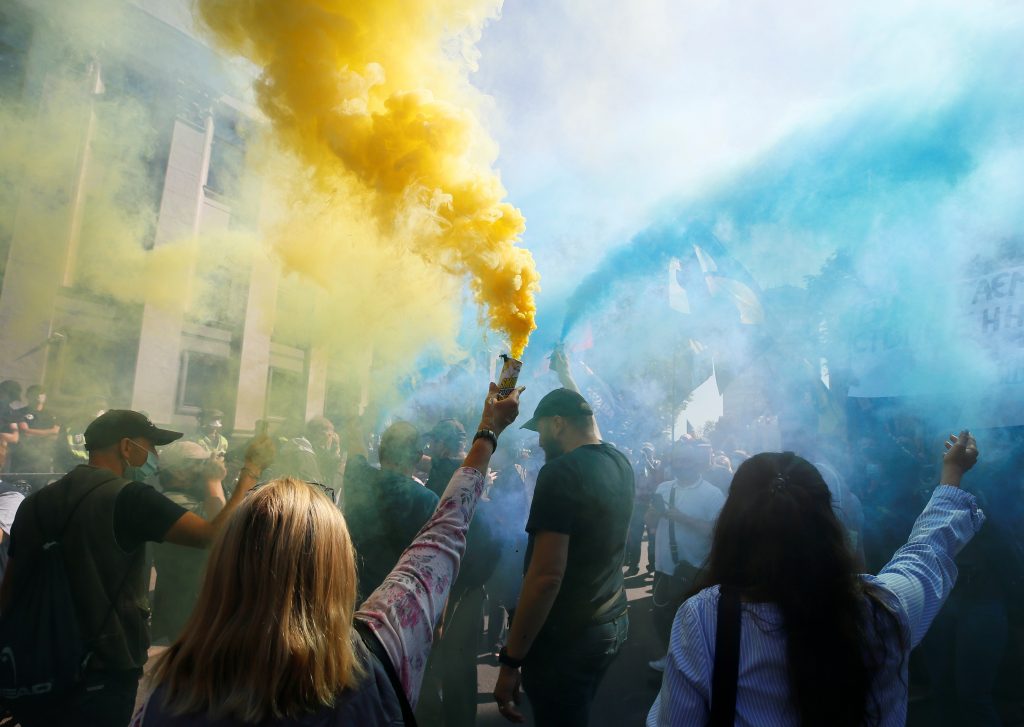
Russia’s position in its region and the world, therefore, relies on subversion, corruption, disinformation, and, when necessary, violence to subordinate sovereign states to its will.”
Protesters hold a rally to demand the creation of a parliamentarian committee of inquiry to investigate what they say a Ukrainian security service operation to detain Russian mercenaries in Kyiv, Ukraine September 14, 2020. A group of Russians were detained in Belarus prior to its Aug. 9 presidential election and were accused of seeking to destabilize the country. REUTERS/Gleb Garanich
Better options
Putin’s Russia is not the only possible Russia, any more than Brezhnev’s Soviet Union was an immutable culmination of Russian history. The Kremlin’s definitions of its interests are not the only option for Russia.
A Russia less authoritarian at home, more constructive abroad, and less hostile to the West and its values, is by no means inevitable. But, in the authors’ view, it is possible. They do not believe that Russia is, as the influential foreign affairs writer Samuel Huntington would have it, civilizationally predetermined to live down to its worst traditions. They also do not believe that Gorbachev’s new thinking or Yeltsin’s far-reaching hopes for his country’s reform and integration with the West were fanciful or mere enthusiasm.
If Ukrainians and Belarusians are ready to risk their lives for the sake of democracy and justice at home, then it seems strange to argue that Russians are, and will always be, content to live under the knout. Recent protests in Khabarovsk are just the latest reminder that there are Russians who yearn for greater freedom and the right to choose their own leaders. As was the case with the Soviet Union during the late Brezhnev period and the reign of Nicholas I, defeat of aggressive designs abroad can trigger a turn to domestic reform. The first attempt to reform post-Soviet Russia failed. The next effort, if it comes, may do better.
US policy guidelines
The United States needs a policy framework to address both Russia’s dismal current realities and its better future potential. The authors offer the following suggestions.
Don’t be in a hurry.
The United States and Putin’s Russia have fundamentally different values and clashing visions of the international order. No single summit, visit, reset, offer, or threat will turn things around.
Don’t seek a “grand bargain” with Putin.
His terms would include the two demands on which previous attempts at better relations have foundered: a Kremlin free hand at home (e.g., no pressure about human rights, democracy, or free elections, and no complaints about repression or assassinations), and a Kremlin free hand in its sphere of privileged interests (i.e., subjugation of Ukraine, Belarus, and other states formerly part of the Soviet Union). No US administration has been able to, or should, accept such terms. It would not only be a betrayal of US values, but it also wouldn’t bring lasting stability. Sooner or later, the people of these countries will demand better, as has been seen in Ukraine, Georgia, and Belarus.
Don’t sacrifice other countries on the altar of better relations with Moscow.
Even when the United States tries to tacitly recognize Moscow’s control, as Richard Nixon and Henry Kissinger did with respect to Warsaw Pact countries, the Kremlin’s rule was neither stable nor sustainable. On the contrary, better relations begin with an end to Russia’s aggression in Ukraine, especially the eastern Donbas. Russian use of force against Belarus would (and should) be another problem in US-Russian relations, and the cause for additional sanctions or other punitive steps.
Don’t buy into clichés about Russia,
e.g., that it is civilizationally destined to have autocratic rulers or be inevitably backward or despotic, or that Russians have infinite capacity for suffering or are happy with stagnant stability through tyranny. The Russians suffered, fought, and prevailed during World War II, when they were fighting for their lives. But, Germany defeated Russia in World War I, and the Russians turned against their own rulers for their incompetence and misgovernment.
Do resist Kremlin aggression.
That means, among other things: actively supporting the sovereignty and independence of Ukraine, Georgia, and Belarus; seeking to deter more Kremlin interference in US and European elections, and imposing substantial costs if interference continues; strengthening NATO’s deterrence posture along its eastern flank; strengthening the United States’ ability to resist and, if necessary, respond to Kremlin cyber and information warfare; and exposing and drying up Kremlin dirty money and hidden investment flowing through Western financial systems.
Do try to stabilize the relationship.
The United States and its allies should maintain and, if possible, expand military-to-military talks and regular dialogue with Moscow, even on contentious issues. Doing so would be neither a reward nor a trap, but a way to reduce the risks that minor incidents could escalate into open conflict. As it seeks to do this, the United States should take care not to pay for dialogue through unwarranted concessions to “improve the atmosphere.”
Do look for areas of potential common ground.
These could include arms control, including preservation of New START, but also dialogue on non-strategic nuclear weapons and emerging weapons technologies, in order to mitigate their potential impact on strategic stability. Dialogue could also include areas on which the United States and Russia, in theory, have similar objectives, such as North Korean denuclearization, counterterrorism, future pandemics, and climate change. There may be value in opening a dialogue about China, since today’s Moscow-Beijing entente may give way to renewed competition.
Do work with Europe.
The United States’ NATO and European Union partners have a range of views on Russia and how to deal with Putin. But, many share the US starting point (as the authors have tried to define it), and there is a strong basis for a common transatlantic policy. Experience shows that the United States can forge a strong consensus on Russia strategy if it listens to its allies, especially the Germans, and does not, like President Trump, pick gratuitous fights with its friends.
Do be patient.
The late Putin era in Russia—which could have sixteen more years to run based on recent constitutional amendments—may not be the best time to launch ambitious new initiatives with the Kremlin. It may be that the best the United States and its allies can do is to manage the competition, impose meaningful costs on Russia for its aggressive behavior, and reduce its own vulnerabilities to disinformation, subversion, and cyberattacks. That may be enough for the present.
Do reach out to Russian society.
Exchanges, support for free media, and contact with a broad range of Russians—including, but not limited to, the opposition—sounds pedestrian, but the United States learned during the Cold War that such efforts can have a significant cumulative impact. Putin’s regime will not like that, and will continue to stigmatize Russians who engage with the West as foreign agents. The United States needs to persevere despite the obstacles.
Do fight back in the information space.
In addition to people-to-people contacts, the United States should develop more active, well-funded information efforts—not just to debunk Kremlin disinformation, but to provide a more accurate image of US society and policies. Russians, especially the restive younger generation, need to hear that Americans remain hopeful about and interested in a strong, democratic Russia that, once again, seeks to live in peace with its neighbors and with the West, contrary to Putin’s rhetoric about alleged Russophobia. The Trump administration’s abrupt replacement of Radio Free Europe/Radio Liberty’s and Voice of America’s leadership, and weakening of Voice of America (including by forcing foreign-citizen reporters to leave the United States by not renewing visas) weakens one of its tools in such an effort, and serves no US interest that the authors can identify.
Do invest in, and prepare for, a better future with Russia.
The authors have argued in this paper that there is potential for positive change in Russia. The United States should now consider how to respond to it. New leadership in the Kremlin, when it finally arrives, will seek to advance its own agenda, not that of the United States, and for its own reasons. But, new leadership seeking to end Russia’s internal stagnation and external isolation may be more open to settling the worst outstanding disputes, like Ukraine, and exploring the basis for a genuine shift in relations toward partnership and mutually beneficial cooperation, picking up where things left off two decades ago. The political circumstances of such new leadership may be far more favorable than they were for Yeltsin; they will not be weighed down by the Soviet imperial collapse or the chaotic results of incomplete and spotty reforms.
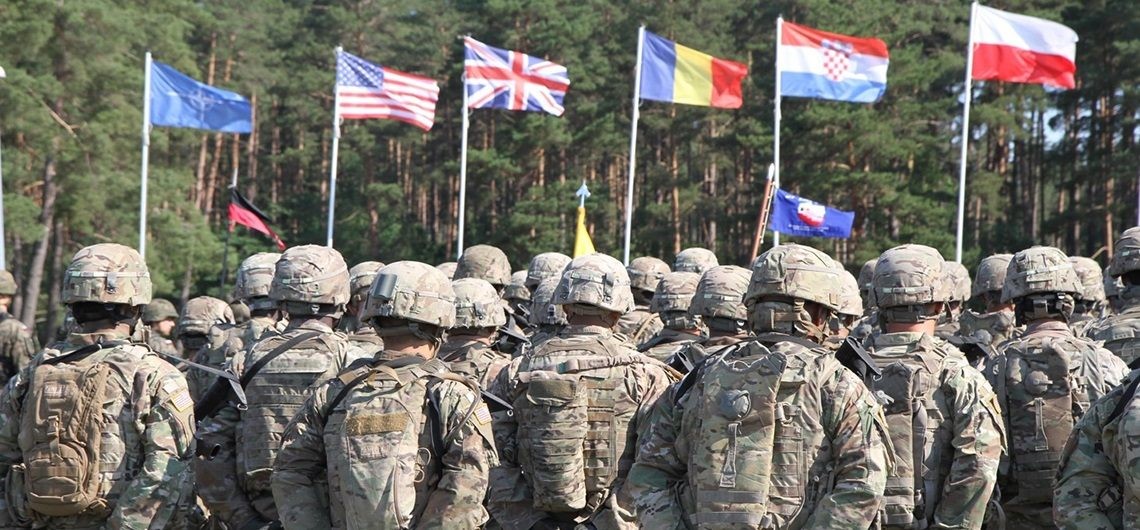
US Army Soldiers participate in the opening ceremony of Saber Strike, US Army Europe’s exercise focused on the Baltic States, at the Bemowo Piskie Training Area in Poland on Monday, June 4, 2018. Photo: Michigan Army National Guard: 1st Lt. Erica Mitchell/released
The coming years may offer new opportunities for a Russia that is thinking about itself and the world in more constructive ways. The post-COVID-19 international system may (and, the authors believe, will) be more multilateral, with its core consisting of key democracies in Europe, North America, Asia, and elsewhere, rather than being centered on US primacy, while maintaining the values-based fundamentals of the post-1945 US-led system at its best. A more multipolar West would represent an achievement of US grand strategy since 1945, rather than a defeat for US power.
This would not meet the Kremlin desire for spheres-of-influence arrangements that would give it leave to dominate its neighbors. Nevertheless, a different, more constructive Russian leadership might find it more comfortable to join such a system—less a surrender to US hegemony from its point of view, and more multilateral in form—and the United States would be well advised to welcome this.
The fundamentals underlying Russian foreign policy require realism and practicality in the West’s response in the short term. But, while dealing with Putin’s Russia as it is, the United States should also be ready to deal in a different way with a different Russia when it ultimately emerges.
No comments:
Post a Comment